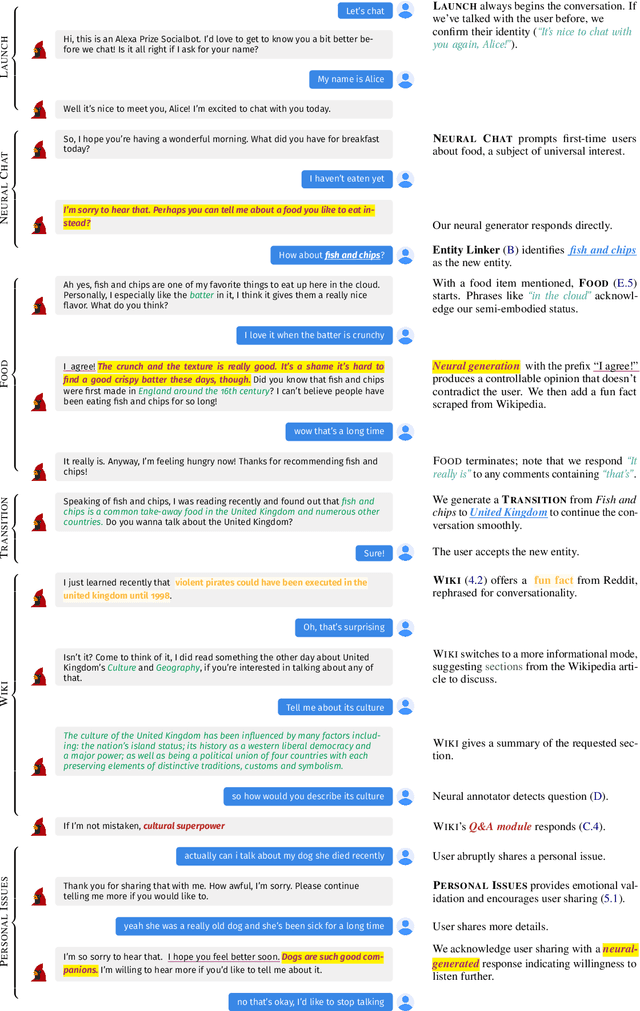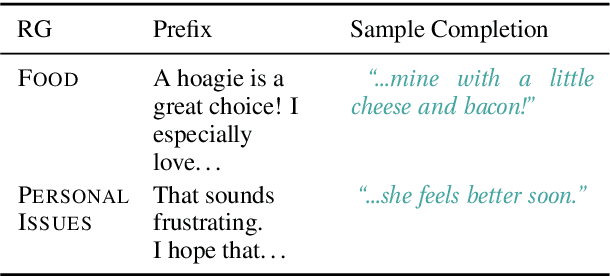Swee Kiat Lim
Neural Generation Meets Real People: Building a Social, Informative Open-Domain Dialogue Agent
Jul 25, 2022



Abstract:We present Chirpy Cardinal, an open-domain social chatbot. Aiming to be both informative and conversational, our bot chats with users in an authentic, emotionally intelligent way. By integrating controlled neural generation with scaffolded, hand-written dialogue, we let both the user and bot take turns driving the conversation, producing an engaging and socially fluent experience. Deployed in the fourth iteration of the Alexa Prize Socialbot Grand Challenge, Chirpy Cardinal handled thousands of conversations per day, placing second out of nine bots with an average user rating of 3.58/5.
DOPING: Generative Data Augmentation for Unsupervised Anomaly Detection with GAN
Aug 24, 2018



Abstract:Recently, the introduction of the generative adversarial network (GAN) and its variants has enabled the generation of realistic synthetic samples, which has been used for enlarging training sets. Previous work primarily focused on data augmentation for semi-supervised and supervised tasks. In this paper, we instead focus on unsupervised anomaly detection and propose a novel generative data augmentation framework optimized for this task. In particular, we propose to oversample infrequent normal samples - normal samples that occur with small probability, e.g., rare normal events. We show that these samples are responsible for false positives in anomaly detection. However, oversampling of infrequent normal samples is challenging for real-world high-dimensional data with multimodal distributions. To address this challenge, we propose to use a GAN variant known as the adversarial autoencoder (AAE) to transform the high-dimensional multimodal data distributions into low-dimensional unimodal latent distributions with well-defined tail probability. Then, we systematically oversample at the `edge' of the latent distributions to increase the density of infrequent normal samples. We show that our oversampling pipeline is a unified one: it is generally applicable to datasets with different complex data distributions. To the best of our knowledge, our method is the first data augmentation technique focused on improving performance in unsupervised anomaly detection. We validate our method by demonstrating consistent improvements across several real-world datasets.
 Add to Chrome
Add to Chrome Add to Firefox
Add to Firefox Add to Edge
Add to Edge